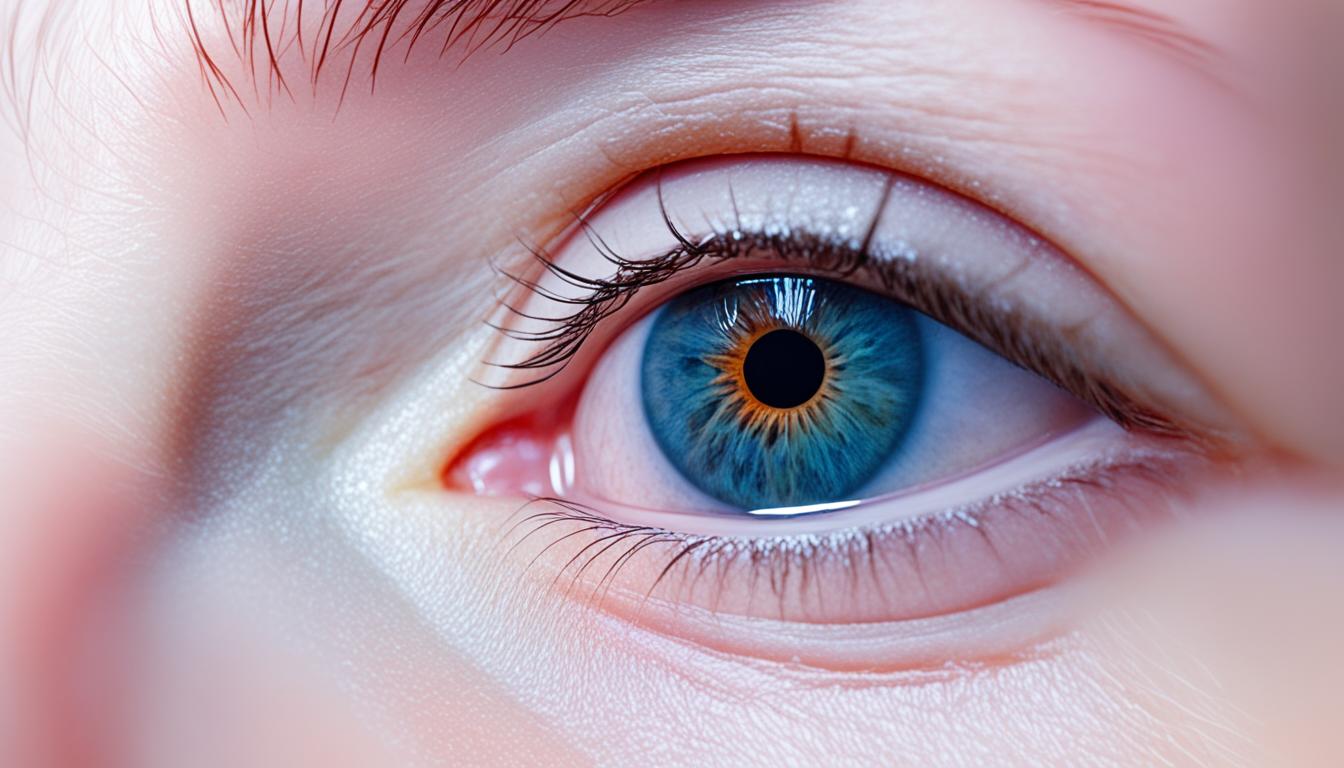Ectropion affects the lower eyelid, making it drop or turn out. This can cause discomfort and problems seeing for those affected. It’s often due to age-related changes in the eyelid and pressure on the tendons. Previous surgeries, dry eyes, and skin conditions like dermatitis can also play a part.
People with ectropion may have dry eyes, tear a lot, and their eyes or eyelids might look red. They can also be sensitive to light and wind. If not treated, ectropion can hurt the cornea and damage vision.
A doctor who knows a lot about eye problems will check for ectropion. They will examine your eyelid. They may also do tests to check how bad it is and why it happened.
The treatment for ectropion depends on how bad it is and what caused it. Mild cases can sometimes be helped with eye ointment and care to prevent irritation. But, if it’s severe, surgery might be needed to fix the eyelid. In some very serious cases, more complex surgeries are necessary.
Stem cell therapy is a new way to treat ectropion. Scientists believe stem cells could repair damaged parts of the eyelid. This might help it function better and look normal again. While early results are promising, more studies are necessary to understand if this treatment will work well in the long term.
Key Takeaways:
- Ectropion is a condition that causes the lower eyelid to droop downward or turn outward.
- Common causes of ectropion include aging, stretching of the tendons, previous surgeries, dry eyes, tearing, eyelid burns, and skin diseases.
- Symptoms include dry eyes, excessive tearing, redness, and sensitivity to light and wind.
- Diagnosis is usually performed by a qualified physician specializing in eye conditions.
- Treatment options include lubricating ointments for mild cases and surgical intervention or reconstructive procedures for more severe cases.
- Stem cell therapy is a cutting-edge option that may offer promising results for ectropion treatment.
Ectropion Treatment and Surgery Options
Ectropion treatment varies depending on how bad it is. Mild cases can often be managed with eye ointments. These ointments help lessen symptoms and stop more irritation. If the case is severe, surgery may be needed to fix the eyelid’s function and position.
Surgeons use different methods to fix ectropion. One common surgery tightens the eyelid margin and repositions it. Canthoplasty strengthens the eyelid’s outer corner. Both surgeries aim to correct ectropion and make the eyelid look better.
Yet, sometimes surgery alone won’t fix the problem. For complex cases, reconstructive surgery might be required. This type of surgery aims to repair the eyelid fully and correct any underlying issues.
While ectropion surgery isn’t usually risky, there are dangers to know about. These include infection, scars, or the ectropion coming back. Choosing a skilled surgeon reduces these risks and boosts success chances.
To prevent ectropion, people should avoid eye trauma and not stretch their eyelids too much. Managing any related health issues is crucial. Seeking medical help early if ectropion signs appear can stop further problems and improve treatments.
Ectropion Surgery Complications
Ectropion surgery, like any surgery, has risks. Knowing these helps making a wise choice about treatment. Below are potential complications of surgery:
| Complications | Description |
|---|---|
| Infection | Infection can happen at the surgery site, leading to slow healing and more pain. |
| Scarring | Scars might form near incisions, changing how the eyelid looks. |
| Recurrence | Ectropion may come back, needing more surgery in some cases. |
Though complications are rare with skilled surgeons, discussing concerns is vital. Talk to a healthcare provider to fully understand the surgery’s risks and benefits.
Treating ectropion effectively depends on its severity and the patient’s needs. With the right healthcare advice, choosing the best treatment path is possible. This helps manage ectropion and get the best results.
Stem Cell Therapy for Ectropion Treatment
Stem cell therapy is a new and hopeful way to treat ectropion. Stem cells can turn into different cell types, even those needed for the eyelid. This treatment uses the power of stem cells to fix and improve the eyelid, making it work and look better.
The process starts by taking stem cells from the patient’s body. They can come from fat tissue or the bone. These cells are then put in the eyelid area where they’re needed. So far, early tests show that using stem cells to treat ectropion works well. But, more studies are needed to understand if it’s truly safe and effective over time.
This kind of therapy offers a different choice from surgery. It’s a natural way that could last longer for people with ectropion. Because it uses the patient’s cells to heal, it could bring back normal eyelid functions and better life quality.
There’s a lot of ongoing research about using stem cells for ectropion. This research suggests that stem cell therapy is a promising and new option. It’s for patients who are looking for better, creative ways to treat their ectropion.

